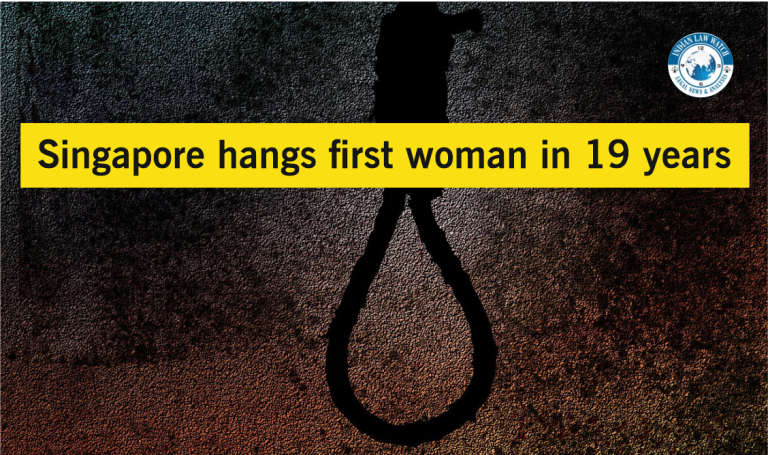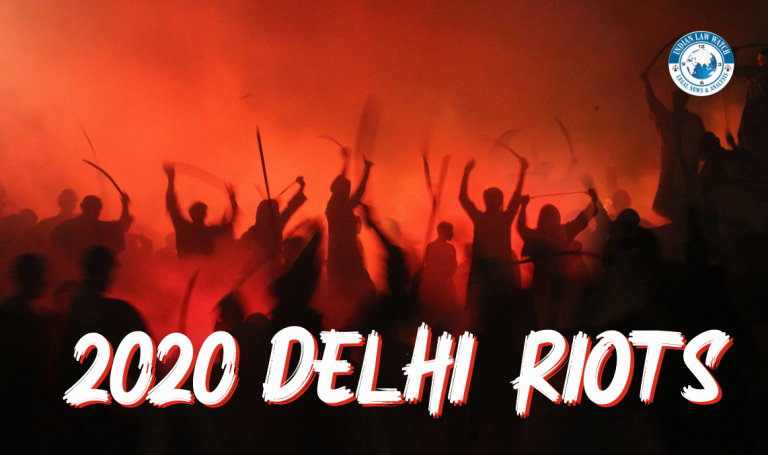
 University of Delhi established in 1924 pursuant to the Delhi University Act, 1922. The principal seat of DU, together with many colleges, departments and research centers is located in North Delhi, commonly called as North Campus. There are large numbers of old historical buildings, Viceroy’s Lodges, colleges that belong to colonial period, etc. Persistent efforts have been made to preserve unique characteristics of DU’s North Campus under Master Plan of Delhi. The land in question belonged to Ministry of Defense. For the purpose of Delhi Metro Rail Corporation (DMRC’), a parcel of land, admeasuring 3.05 hectares, situated at Mall Road, Cavalry Lane and Chhatra Marg, falling in zone C (Civil Line zone) of MPD-2021, was acquired and handed over to DMRC. Mutation also took place-entering name of DMRC in municipal record. Land use, categorized under MPD 2021, was “Public and Semi-public facility”. On 13.08.2008, DMRC transferred two hectares of land to PP for development of a group housing project. Agreement between DMRC and PP was executed on 15.12.2008. Possession of land was handed over to PP by DMRC. State Environment Impact Assessment Authority (‘SEIAA’) granted EC to PP under Environment Impact Assessment Notification 2006 (EIA) permitting construction of ‘group housing project’ on an area of 20,000 m2 with built up area, 1,17,733.81 m2 having A+G+37 floors with 410 dwelling units.
University of Delhi established in 1924 pursuant to the Delhi University Act, 1922. The principal seat of DU, together with many colleges, departments and research centers is located in North Delhi, commonly called as North Campus. There are large numbers of old historical buildings, Viceroy’s Lodges, colleges that belong to colonial period, etc. Persistent efforts have been made to preserve unique characteristics of DU’s North Campus under Master Plan of Delhi. The land in question belonged to Ministry of Defense. For the purpose of Delhi Metro Rail Corporation (DMRC’), a parcel of land, admeasuring 3.05 hectares, situated at Mall Road, Cavalry Lane and Chhatra Marg, falling in zone C (Civil Line zone) of MPD-2021, was acquired and handed over to DMRC. Mutation also took place-entering name of DMRC in municipal record. Land use, categorized under MPD 2021, was “Public and Semi-public facility”. On 13.08.2008, DMRC transferred two hectares of land to PP for development of a group housing project. Agreement between DMRC and PP was executed on 15.12.2008. Possession of land was handed over to PP by DMRC. State Environment Impact Assessment Authority (‘SEIAA’) granted EC to PP under Environment Impact Assessment Notification 2006 (EIA) permitting construction of ‘group housing project’ on an area of 20,000 m2 with built up area, 1,17,733.81 m2 having A+G+37 floors with 410 dwelling units.
This EC dated 23.03.2018-permitting amendment in the initial EC dated 13.08.2012 was challenged by applicant in Appeal No. 112/2018, University of Delhi vs. MoEF&CC & Others on various grounds. Memo of Appeal shows grounds raised in the said appeal, inter-alia as under: project is in category A and SEIAA has no authority to grant EC; non-consideration of relevant aspects namely ambient air quality standards in terms of noise, air pollution vis-à-vis traffic congestion, water requirement and environmental concerns, waste management, fire safety standards, impact of the proposed project on the northern ridge, violation of the approved Master Plan/Development Plan etc.
Tribunal constituted a Joint Committee comprising CPCB, MoEF&CC and IIT, Delhi requiring evaluation of relevant data and not the old database. Tribunal also directed Committee to undertake carrying capacity study of the area with reference to the project in question based on the relevant data. An interim order was also passed directing that no further construction activity would be undertaken and status quo would be maintained.
As per data furnished by PP, distance of project from Northern Ridge is within 500 meters. Vide order dated 30.11.2011 Delhi High Court in WP(C) No. 3339 of 2011, Ashok Kumar Tanwar vs. Union of India, held that clearance of Ridge Management Board is required for construction in the Ridge area. This view was affirmed by Supreme Court in (2016) 13 SCC 561, DDA vs. Kenneth Builders & Developers Pvt. Ltd. No doubt, in the present case, project is said to be 500 meters away from Ridge and not in Ridge as such, impact of development of project of such magnitude close to Ridge, which is a Reserve Forest of immense importance and also ecological lifeline of Delhi, was required to be considered which has not been done. It was more important when site is in ground water discharge zone and form a path for recharge of ridge.
The site in question was originally parking for Metro Station. Once the site becomes a group-housing complex, parking which was to be at this site will now be on public roads, causing further congestion and consequent pollution. Delhi is already grappling with the problem of parking and it is a matter of common knowledge that most of the public roads have been converted into parking lots on account of ever-increasing number of vehicles without adequate carrying capacity of road infrastructure. Present location is equally affected, if not more, as already discussed.
Considering that carrying capacity of the area to sustain such high rise building has not been conducted and that air and noise levels are already beyond permissible limits, building is located very close to reserve forest, river Yamuna, premier educational institutions and hospitals and areas with high traffic density, we find it difficult to hold that there is application of mind in granting EC.

The object of requirement for environmental clearance is to ensure that no project adversely affecting environment comes up. Thus, EC can be granted only after ensuring that project will not have adverse impact on environment and not otherwise. This places responsibility on EAC/MoEF&CC to conduct meaningful appraisal of impact of the project on environment. Mitigation measures can be prescribed where project is otherwise viable. In the present case, EC has been granted without adequate appraisal. There are conditions for mitigation, including compliance of Water Act, 1974 and Air Act, 1981. However, once there is no carrying capacity in terms of air quality norms, merely laying down of such general conditions is merely a formality and not adequate safeguard.
As already mentioned, it is well settled that Sustainable Development and Precautionary Principles are part of right to life. The same are also enforceable under Section 20 of NGT Act, 2010. Polluting activities have to be prevented for clean environment, particularly right to breathe fresh air. Citizens of Delhi are already facing threat to their health on account of air, noise and other pollution. No additive load thereto, can be permitted by such unviable mega project.

In the context of air pollution sustainability of this project was required to be evaluated by undertaking carrying capacity assessment in terms of
-
Estimation of total Existing PM load (both PM2.5 and PM10).
-
Estimation of total Assimilative Capacity w.r.t. PM load (both PM5 and PM10).
-
Estimation of total Supportive Capacity w.r.t. PM load (both PM5 and PM10).
As already observed above, EAC has not examined the above aspects and also Isopleth of predicted ground level concentration of pollutants because of additive effect of such high rise project, in terms of increased traffic load on recipient air has not been predicted which vitiates the impugned EC. We also do not find Windrose diagram of air pollution on record as apparently no pollution Windrose analysis has been conducted.
PP has referred to the factum that project in question is high-income premium building project and every floor has only two flats of 3 or 4 BHK. Obviously, it is to cater to upper echelon of society comprising sufficiently rich people. Contemplating just two vehicles of in such family is under mining the living standard of such class of people for whom the project in question is proposed. The actual number of vehicles is bound to be much more in as much as each family member may have separate vehicle and the exact load would be much more. In any case, when Delhi and NCR area residents are already living under heavy air pollution, without examining the actual impact on air pollution due to the above project, EAC could not have proceeded in a mechanical manner and it shows non-consideration of relevant material and also non-disclosure of complete material by PP.
Besides the operational phase, even construction phase is bound to cause huge pollution which aspect has not been mentioned in detail and discussed by EAC at all. We have examined pre-construction air pollution by the project in question. On account of pre-construction, during construction and post construction activities including demolition would generate higher level of air pollution.
PP has not disclosed any information with regard to construction phase and the pollutant to be released. Further, PP has not indicated the PM levels post construction, which is the most critical information as far as Delhi is concern as the Vehicular movements and dust emission generations. At para no. 5.4 of Form I, page 365, it is stated that the particulate matter generation is 6 tons per month.PP has agreed to provide only Rs. 6.5 lakhs for the dust suppression system in terms of anti-smoke gun and dust mitigation measures. This amount is extremely meager considering the severity of ambient air quality levels of Delhi and NCR region. As reported by the PP, the PM10 level is in the range over 300 micro gram/m3. This shows lack of application by the PP on such important aspect.
The aspect of noise pollution is divided in construction phase and operation phase. The said project during construction phase would generate huge noise level on account of man made activities which are part of various construction activities starting from the clearance of the site, excavation and foundation, loading and unloading of materials, superstructure construction etc. and construction machinery movements, vehicular movement and D.G. set. These activities would further enhance the noise level in already exceeded noise levels of Delhi as per the National Ambient Noise standards. This is all the more relevant since there are sensitive receptors like hospitals, educational institutions, residential colonies with old age people and other vulnerable group of people in the immediate vicinity of the instant proposal.
No information with regard to decommissioning has been prescribed. Decommissioning of a project after its completion of life cycle required to supply following information which ought to have been given in Form I by PP.
- Quantification of demolition waste
- Steps involved in demolition
- Removal of Disposal of Asbestos items / Materials
- Removal of the New and Unused Movable items / Materials
- Removal of New and Unused Detachable items
- New and Unused Assembled items
- Old / Used Movable items / Detachable
- Miscellaneous Items
- Management of the disposal of inert demolition waste.
With regard to microclimate changes PP has not given proper justification with regard to heat, which would be generated from such large construction including air conditioners that will be operational in high-rise buildings. Instead, PP has just justified saying green cover will reduce the formation of heat island. It is to mention that the green cover of trees would take maximum cover up to one to two floors, which is height of the tree, but the buildings are more than 40 floors. Hence heat generation from these structures and mitigation measures are not mentioned. Further micro climatic conditions also include the vehicles that would be owned by the residents. Their movement and emission that would take in confined place has not been studied.
 The discussion made above makes it clear that PP is guilty of concealment of material and information/non-disclosure of complete information/withholding of relevant information and EAC has also not applied it mind to various aspects as discussed above. MoEF & CC in a mechanical manner has granted EC following recommendation of EAC and, therefore, EC is vitiated in law. All the issues discussed above are answered in affirmative, in favour of appellant and against PP as also the statutory Regulators who have granted EC in question. PP has also failed to disclose construction on about 100 m2 of the land in question, which according to him is a service structure temporary in nature and liable to be removed after completion of the project, but it was incumbent upon PP to disclose information in Form I that it has failed.
The discussion made above makes it clear that PP is guilty of concealment of material and information/non-disclosure of complete information/withholding of relevant information and EAC has also not applied it mind to various aspects as discussed above. MoEF & CC in a mechanical manner has granted EC following recommendation of EAC and, therefore, EC is vitiated in law. All the issues discussed above are answered in affirmative, in favour of appellant and against PP as also the statutory Regulators who have granted EC in question. PP has also failed to disclose construction on about 100 m2 of the land in question, which according to him is a service structure temporary in nature and liable to be removed after completion of the project, but it was incumbent upon PP to disclose information in Form I that it has failed.
PP has failed to disclose correct and complete information’s, withheld relevant information and violated provisions of EIA 2006, hence is liable to face consequences as per the provisions of EIA 2006. Further, EAC in making recommendation for grant of EC has failed to consider relevant aspects/factors as also failed to appraise project/activity by studying the impact on environment on various factors discussed above. Hence, it is a case where recommendation is without any proper application of mind on the part of EAC and mechanical exercise of MoEF & CC in granting EC also vitiates EC. Further, in view of the answer to question II and III above, EC in question is unsustainable and has been issued without considering relevant aspects and principles obligatory to be examined before grant of EC. Hence, EC is vitiated in law.
EC has been granted without proper evaluation, project cannot be allowed without such proper evaluation about its sustainability or otherwise in the light of available data, a case is made for interference by this Tribunal. As discussed above, existing air and noise levels do not permit any further additive load in the area, particularly a high-rise building having adverse impacts on environment, including potential for fire incidents, adverse impact on micro climate due to wind funneling and turbulence around their bases, generation of particulate matter because of heavy machinery and equipment and waste management. There will be unmanageable impact on traffic density and adverse impact on flora and fauna and groundwater regime of nearby pristine Ridge.





